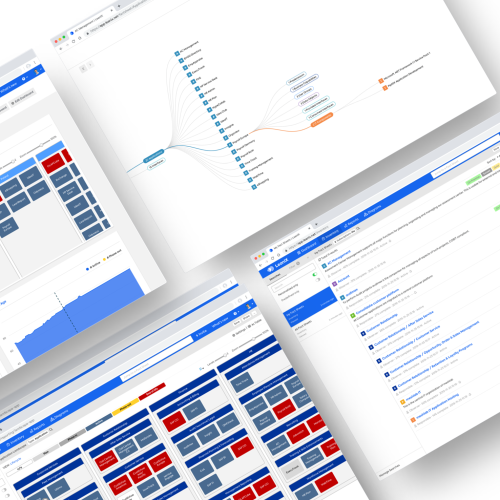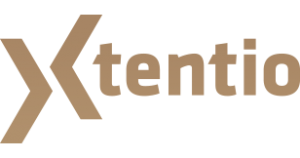In the first part of our EAM series we reported on how important it is to get the most important stakeholders in the company on board right from the start when introducing Enterprise Architecture Management. Today, it's all about choosing the right operating model.
The demands on IT management have increased significantly. With the growing demands of digital transformation, real-time data flows, the shift from on-premises to cloud solutions, and the exponential growth in the number of data providers and consumers, it is becoming increasingly difficult to keep track of it all. The lack of visibility into the IT landscape is a risk that can no longer be managed with traditional methods and Excel tools. This is exactly where Enterprise Architecture Management (EAM) an. EAM hilft Ihnen, eine saubere IT-Architektur aufzubauen und in Echtzeit zu managen. So erhalten Sie einen transparenten Überblick, erkennen wichtige Abhängigkeiten, reduzieren die Time-to-Value, erkennen Risiken und reduzieren deren Auswirkungen.
But what are the requirements for EA management in your organization? As is so often the case, there is no single definition that fits all companies equally. You should therefore define one important framework condition right at the beginning: Which IT operating model best suits my company and our corporate structure?
Factor 2: Choose the right IT operating model
If, as in the first part the first part you have established an effective Enterprise Architecture Management Board with your key stakeholders, you should now process the input from these stakeholders:
- What are the expectations behind the requirements?
- What are the constraints and specifics of the organization, such as culture, structure, limitations, and opportunities?
- What are the mid- to long-term goals of the organization, and what organizational changes should the enterprise architecture support?
It makes sense in this phase to document these framework conditions cleanly, for example in the form of an Operating Model CanvasThis creates a stable basis for the next step: defining a suitable IT operating model for your organization. Four basic types of operating models are2 distinguished:
Coordination
The coordinated operating model is characterized by shared customer, product, or supplier data, but operationally independent business units. Process standardization is low. However, these business units are interconnected and the processes are deeply integrated. The IT infrastructure and middleware are also provided centrally, and customer and product data is managed centrally. Choose this operating model if your organization consists of autonomous areas that have greater freedom to design their business processes, for example, to adapt them to their specific needs and processes.
Unification
The unified operating model lends itself to highly centralized organizations. Business processes are largely standardized, and customers and suppliers are merely geographically distributed. All business units operate according to similar procedures based on the same process definitions. Product and customer data are managed centrally, and the IT systems and infrastructure are provided centrally. IT decisions on strategy, technology and applications are also made centrally. This operating model is therefore designed to support the greatest possible standardization of business processes in all areas of the company.

Diversification
The diversified operating model makes sense when each part of the company operates largely autonomously and independently. They have few, if any, products, customers or suppliers in common. There is also no higher-level standardization and no integration of business processes. IT decisions are made in a decentralized manner and can differ significantly from one area to the next. However, it is possible for the parent organization to provide individual central "shared services" and infrastructure technology that can be used by the business units as needed.
Replication
Even with the replication operating model, there are few common customers or suppliers. But autonomous business units use proven, enterprise-wide process definitions, best practices, and common services and IT services as a blueprint for their own business processes. However, data and information are managed locally, not shared across the enterprise, and there are few overarching processes and interfaces. A typical field of application for this operating model is, for example, franchise companies.
Why is the selection of an operating model so critical? Quite simply, every company ticks differently. And operational models provide a simplified blueprint for the right IT organization. And there are significant differences here: a model that works brilliantly in a highly centralized organization will fail miserably in a decentralized organization of autonomous business units. It is important that you do not make the decision for an appropriate operating model based solely on the current status quo; the model must describe the company's "target operating model, " or TOM.
It is therefore highly dependent on the company's medium- to long-term strategy. Choose the operating model (coordination, unification, diversification, or replication) that best fits your organization and align that decision with your stakeholders. In doing so, you create one of the most important guardrails for the steps ahead.

How to find the right IT operating model for your business
- First, clarify what structure your company has, and create for example an Operating Model Canvas.
- Consider future developmentas far as possible, e.g. upcoming reorganizations.
- Choose the IT operating model that fits.
- Coordinate this proposal with their Enterprise Architecture Board and define the operating model.
Now you know another success factor for implementing effective EA management.Part Three is about building an EAM power team!

Your IT portfolio, finally transparent!
Learn how Xtentio and LeanIX can give you a unified view across all systems and infrastructure projects in four weeks.
Xtentio is a certified partner of LeanIX , the leading tool for collaborative EA management. We support you with the LeanIX Enterprise Architecture Suite in the introduction of Enterprise Architecture Management in your company.
2Ross, Weill, Robertson: Enterprise Architecture as a Strategy. HBS Press, 2006
